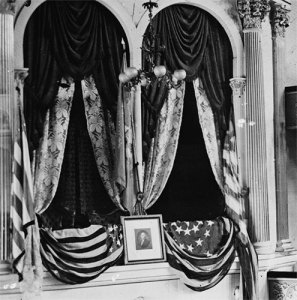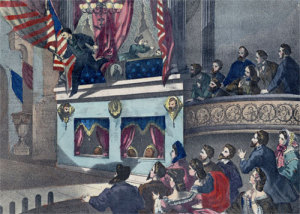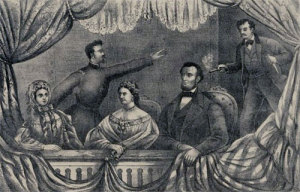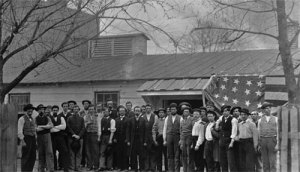A night of horror and a night of flags

The story of the assassination on Abraham Lincoln, 150 years ago, is the story of American flags, blood-stained, ripped and draped with black ribbons.
On April 14, 1865, joyous over the recent end of the Civil War, when Confederate flags had been folded in defeat at Appomattox, Lincoln had an idea. He invited his wife and two guests to go to Ford’s Theatre to see a comedy. That it was Good Friday did not deter them; they had experienced enough death and sorrow over the preceding four years.
That very morning, the American flag at Fort Sumter in the harbor of Charleston, South Carolina, had been returned to its staff. When it had been taken down in 1861 by rebel forces, the War Between the States was triggered.
As the quartet reached their box in the theatre, more banners greeted them: three American flags and two Treasury Department flags. At least two of those would play key roles in the tragedy about to occur.

After 10 p.m., John Wilkes Booth murdered Lincoln and leapt from the box to the stage below. Catching his spur in a flag, he landed awkwardly and hobbled away. The startled audience panicked at the gunshot, and cries of “the president’s been shot!” resounded.
When the leading actress in the play was led into Lincoln’s box, she cradled his bloody head on her lap, at one point pushing part of an American flag under his neck in a gesture that was comforting – and symbolic.

Lincoln was carried across the street to a rooming house, where he spent the remaining few hours of his life. In death, he was covered with an American flag and borne outside to a flag-bedecked hearse to return to the White House.
As soon as word spread, first in the city, subsequently to the nation and world, flags were lowered to half-staff. A journalist noted the vertiginous slide from celebration to mourning when he wrote: “The flags that flaunted their glittering colors in the sunshine of yesterday…to-day must hang suspended at half-mast.”

A diarist jotted these sad words to describe New York City: “Flags at half mast and tied up with crepe….Even in second and third class quarters, people who could afford to do no more have generally displayed at least a little twenty five cent flag with a little scrap of crepe annexed.”
